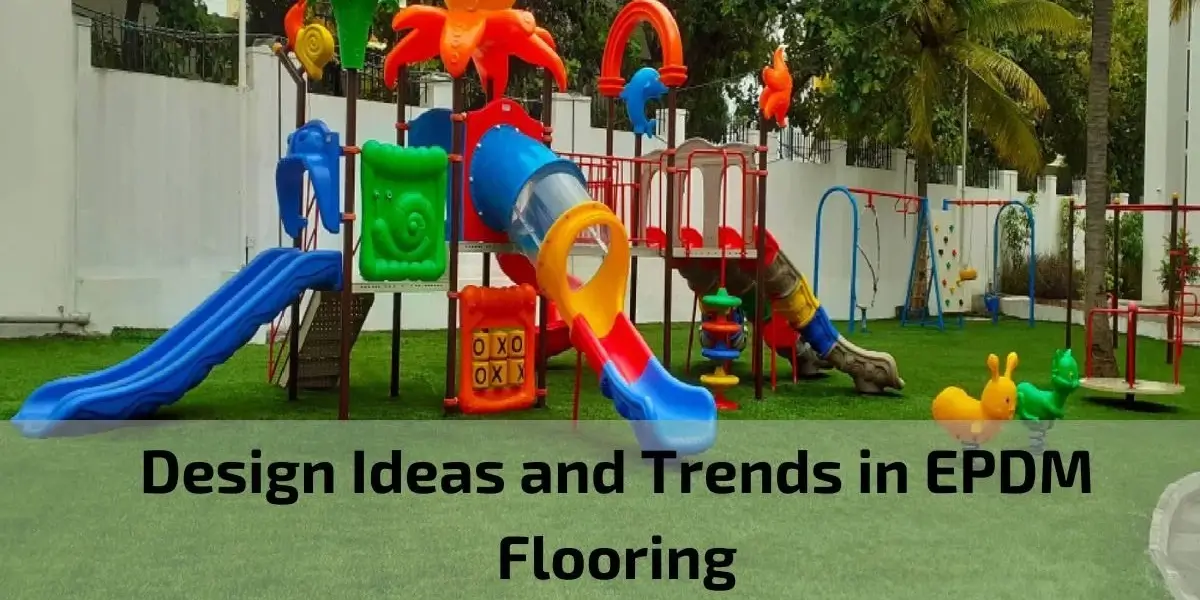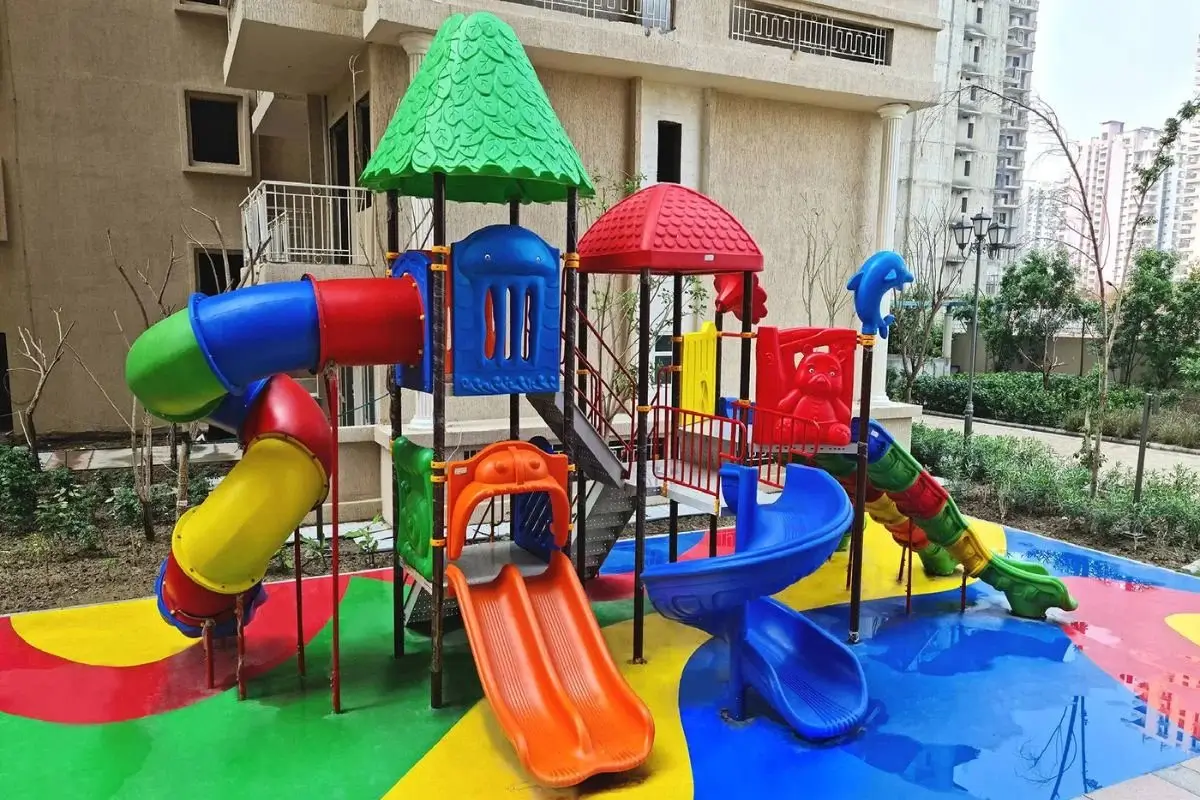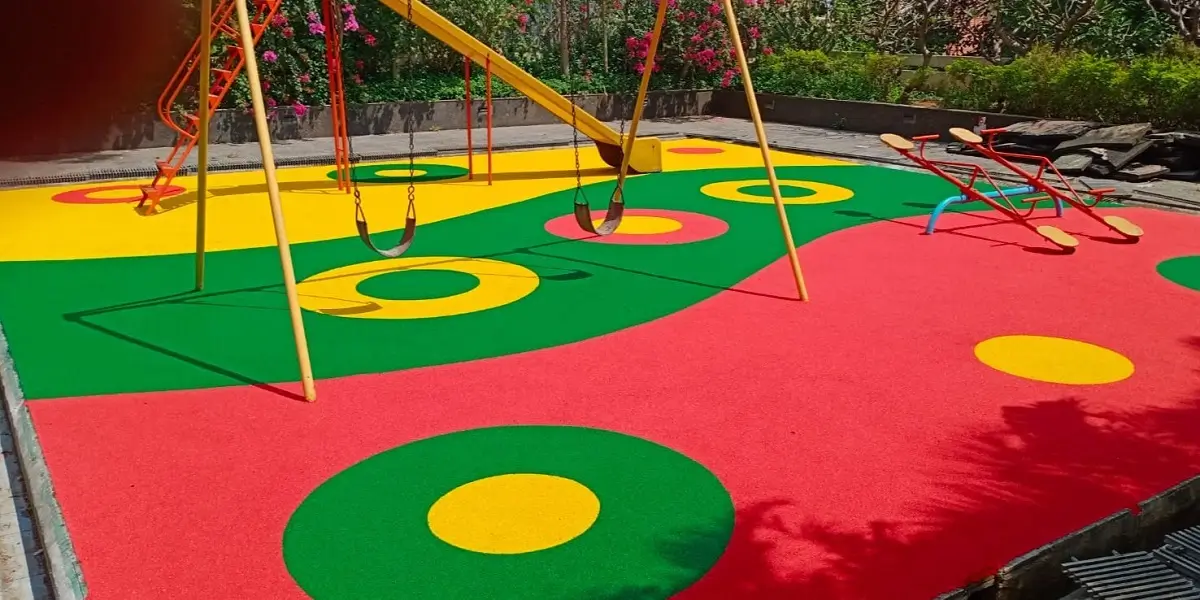In the realm of modern interior design, flooring plays a pivotal role in setting the tone, style, and functionality of a space. Among the diverse array of flooring options available, EPDM (Ethylene Propylene Diene Monomer) flooring stands out as a versatile and innovative choice. With its unique properties and customizable design options, EPDM flooring has become increasingly popular in both residential and commercial settings.
In this exploration of design ideas and trends in EPDM flooring, we delve into the creative possibilities and aesthetic versatility that this remarkable flooring solution offers. From vibrant colors to intricate patterns, EPDM flooring allows designers and homeowners to unleash their creativity and transform ordinary spaces into captivating environments.
Importance of EPDM Flooring in Interior Design
EPDM flooring holds a significant role in interior design, offering a plethora of benefits and contributing to the overall aesthetics, functionality, and sustainability of indoor spaces. Here are several reasons why EPDM flooring is essential in interior design:
- Versatility: EPDM flooring comes in a variety of colors, patterns, and textures, providing designers with endless possibilities to express creativity and achieve desired aesthetics. Whether creating bold statements or subtle accents, EPDM flooring allows for versatile design solutions in diverse interior settings.
- Durability: EPDM flooring is renowned for its durability and resilience, making it suitable for high-traffic areas in residential, commercial, and public spaces. Its robust construction withstands wear and tear, ensuring long-lasting performance and minimizing the need for frequent replacements.
- Safety: Safety is paramount in interior design, especially in spaces where slip and fall accidents are a concern. EPDM flooring offers excellent slip resistance, even in wet conditions, providing a secure and stable surface for occupants. Its shock-absorbing properties also help reduce the risk of injuries from falls.
- Comfort: EPDM flooring provides a comfortable underfoot experience, enhancing the overall comfort and well-being of occupants. Its cushioned surface offers support and relief, particularly in environments where individuals stand or walk for extended periods.
- Sustainability: As environmental consciousness grows, the demand for sustainable building materials increases. EPDM flooring is considered eco-friendly, as it is made from recycled rubber materials and does not emit harmful chemicals or volatile organic compounds (VOCs). Its sustainable attributes align with green building practices and contribute to healthier indoor environments.
- Acoustic Benefits: EPDM flooring effectively absorbs sound and reduces noise transmission, creating quieter and more peaceful indoor environments. Its acoustic properties make it ideal for spaces where noise control is essential, such as offices, schools, and residential buildings.
- Design Flexibility: EPDM flooring offers design flexibility, allowing designers to seamlessly integrate flooring elements with other interior components. Whether used as a focal point or as part of a cohesive design scheme, EPDM flooring enhances the visual appeal and functionality of interior spaces.
Definition and Composition of EPDM Flooring
EPDM (Ethylene Propylene Diene Monomer) flooring is a type of synthetic rubber flooring material known for its durability, flexibility, and resistance to various environmental factors. Composed primarily of ethylene, propylene, and diene monomer, EPDM flooring offers a unique combination of properties that make it suitable for a wide range of indoor and outdoor applications.
The composition of EPDM flooring typically includes the following components:
- Ethylene: Ethylene is a hydrocarbon compound derived from petroleum or natural gas. It serves as the primary building block in the production of EPDM rubber, providing flexibility and elasticity to the flooring material.
- Propylene: Propylene is another hydrocarbon compound that contributes to the chemical structure of EPDM flooring. It enhances the thermal and chemical resistance of the material, making it more resilient to heat, moisture, and harsh chemicals.
- Diene Monomer: Diene monomers, such as ethylidene norbornene (ENB) or dicyclopentadiene (DCPD), are added to the EPDM polymer chain to improve cross-linking and enhance the material’s mechanical properties. These monomers facilitate the formation of strong bonds between polymer chains, increasing the overall strength and durability of the flooring.
- Fillers: Fillers, such as carbon black or calcium carbonate, are incorporated into the EPDM formulation to enhance mechanical properties, reduce cost, and improve processability during manufacturing. These fillers also help regulate the hardness, stiffness, and abrasion resistance of the flooring material.
- Curing Agents: Curing agents, such as sulfur-based compounds or peroxides, are added to the EPDM formulation to initiate cross-linking reactions between polymer chains. This process, known as vulcanization, transforms the soft and tacky rubber compound into a durable and resilient flooring material.
- Pigments and Additives: Pigments are added to the EPDM formulation to impart color and UV stability to the flooring material. Additionally, various additives, such as antioxidants, plasticizers, and flame retardants, may be incorporated to enhance performance, weather resistance, and fire safety.
Advantages and Disadvantage of EPDM Flooring
EPDM (Ethylene Propylene Diene Monomer) flooring offers numerous advantages, but it also has certain disadvantages that should be considered. Here’s a breakdown:
Advantages:
- Durability: EPDM flooring is highly durable and resistant to wear and tear. It can withstand heavy foot traffic and is suitable for high-traffic areas.
- Weather Resistance: EPDM flooring is resistant to UV radiation, extreme temperatures, and weathering. It maintains its structural integrity even when exposed to harsh outdoor conditions.
- Flexibility: EPDM flooring is flexible and resilient, making it easy to install and resistant to cracking or breaking under pressure.
- Easy Maintenance: EPDM flooring requires minimal maintenance. Regular cleaning with mild soap and water is usually sufficient to keep it looking new.
- Versatility: EPDM flooring is available in a wide range of colors and patterns, allowing for customization to suit various design preferences and applications.
Disadvantages:
- Initial Cost: EPDM flooring can have a higher initial cost compared to some other flooring options. However, its durability and long lifespan can make it cost-effective in the long run.
- Susceptibility to Chemicals: EPDM flooring may be susceptible to damage from certain chemicals, oils, and solvents. Care must be taken to avoid exposure to substances that can cause deterioration.
- Not Ideal for Heavy Equipment: EPDM flooring may not be suitable for areas where heavy equipment with sharp or pointed edges are used. It can be susceptible to punctures and indentations.
- Limited Hardness Options: EPDM flooring typically has a consistent hardness level, which may not be suitable for applications where specific hardness requirements are necessary.
Design Ideas and Trends in EPDM Flooring
EPDM (Ethylene Propylene Diene Monomer) flooring offers endless design possibilities and trends that can elevate the aesthetics of any space. Here are some design ideas and trends in EPDM flooring:
- Vibrant Colors: EPDM flooring comes in a wide array of vibrant colors, allowing for bold and eye-catching design statements. Bright hues such as red, blue, yellow, and green can add energy and personality to any environment.
- Custom Patterns: Custom patterns and designs can be created using EPDM flooring, offering endless possibilities for creative expression. From geometric shapes to intricate motifs, custom patterns allow designers to personalize spaces and make a unique statement.
- Textured Surfaces: Textured EPDM flooring surfaces add depth and visual interest to floors, creating a tactile experience for occupants. Textured patterns such as raised dots, lines, or grids not only enhance aesthetics but also provide additional traction and slip resistance.
- Incorporating Branding and Logos: EPDM flooring can be customized to incorporate branding elements, logos, and graphics. Whether used in commercial spaces, sports facilities, or educational institutions, branded EPDM flooring creates a cohesive and memorable environment that reinforces brand identity.
- Seamless Transitions: EPDM flooring can be seamlessly integrated with other flooring materials, creating smooth transitions between different areas. Transition strips and border designs can be used to delineate spaces while maintaining visual continuity throughout the space.
- Naturalistic Designs: Naturalistic designs inspired by elements of nature, such as stone, wood, or grass, are gaining popularity in EPDM flooring. These designs provide a harmonious connection to the natural environment, creating serene and inviting indoor and outdoor spaces.
- Mixing and Layering Colors: Mixing and layering different colors of EPDM flooring can create dynamic and visually engaging patterns. Combining complementary or contrasting colors adds depth and dimension to floors, enhancing the overall design impact.
- Geometric Patterns: Geometric patterns, such as chevron, herringbone, or hexagon, are trending in EPDM flooring design. These geometric shapes create a modern and sophisticated aesthetic that is both visually striking and timeless.
- Reflective Finishes: Reflective finishes, such as metallic or iridescent coatings, add a touch of glamour and sophistication to EPDM flooring. These finishes create visual interest and depth, transforming ordinary floors into focal points of design.
- Sustainable Design: Sustainable design principles are increasingly influencing EPDM flooring trends. Using eco-friendly materials, incorporating recycled content, and promoting energy efficiency are becoming integral aspects of EPDM flooring design.
Types of EPDM Flooring
EPDM (Ethylene Propylene Diene Monomer) flooring comes in various types, each offering distinct characteristics and suitability for different applications. Here are the common types of EPDM flooring:
- EPDM Flooring Tiles: EPDM flooring tiles are pre-cut squares or rectangles made from EPDM rubber. These tiles offer easy installation and can be arranged in various patterns and configurations to create unique designs. EPDM tiles are commonly used in commercial spaces, playgrounds, and fitness facilities.
- EPDM Flooring Rolls: EPDM flooring rolls are continuous sheets of EPDM rubber available in various thicknesses and widths. Rolls are ideal for covering large areas with minimal seams, providing a seamless and uniform appearance. EPDM rolls are commonly used in gyms, sports arenas, and outdoor recreational areas.
- Pour-in-Place EPDM Flooring: Pour-in-place EPDM flooring is installed by mixing liquid EPDM rubber with binders and additives, then pouring the mixture onto the prepared subfloor. Once cured, the result is a seamless, resilient surface that conforms to the contours of the substrate. Pour-in-place EPDM flooring is commonly used in playgrounds, water parks, and outdoor recreational areas.
- EPDM Roofing Membrane: EPDM roofing membrane is a specialized type of EPDM flooring designed for use on flat or low-slope roofs. The membrane is installed in large sheets and adhered to the roof substrate using adhesives or mechanical fasteners. EPDM roofing membranes provide excellent weather resistance and durability, making them suitable for commercial and residential roofing applications.
- Interlocking EPDM Tiles: Interlocking EPDM tiles feature a unique design that allows them to snap together like puzzle pieces, eliminating the need for adhesives or fasteners during installation. Interlocking tiles offer flexibility and ease of replacement, making them ideal for temporary or modular flooring application
Maintenance and Care Tips for EPDM Flooring
EPDM (Ethylene Propylene Diene Monomer) flooring is known for its durability and low-maintenance characteristics. However, to ensure its longevity and performance, it is essential to follow proper maintenance and care guidelines. Here are some tips for maintaining and caring for EPDM flooring:
- Regular Cleaning: Establish a regular cleaning schedule to remove dirt, debris, and spills from the surface of the EPDM flooring. Use a soft-bristled broom, vacuum cleaner with a soft brush attachment, or mop to sweep or vacuum the floor regularly.
- Gentle Cleaning Solutions: Use a mild detergent or soap solution diluted in water for routine cleaning of EPDM flooring. Avoid using harsh chemicals, abrasive cleaners, or solvents, as they can damage the surface of the flooring and diminish its appearance over time.
- Avoid Standing Water: EPDM flooring is water-resistant, but prolonged exposure to standing water can cause damage and deterioration. Promptly wipe up spills and moisture using a clean, dry cloth or mop to prevent water from seeping into the flooring seams.
- Avoid Sharp Objects: Avoid dragging heavy furniture or sharp objects across the surface of the EPDM flooring, as this can cause scratches, punctures, or tears. Use furniture pads or coasters under heavy furniture legs to distribute weight and prevent indentations.
- Preventative Maintenance: Place mats or rugs at entryways and high-traffic areas to capture dirt, debris, and moisture before they reach the EPDM flooring. Regularly clean and replace mats to prevent the buildup of dirt and contaminants on the flooring surface.
- Inspect for Damage: Periodically inspect the EPDM flooring for signs of wear, damage, or deterioration. Look for cracks, tears, or areas of uneven wear that may indicate the need for repair or replacement. Address any issues promptly to prevent further damage and ensure safety.
- Avoid High Heels: Avoid walking on EPDM flooring with high heels or shoes with abrasive soles, as they can cause scratches, scuff marks, or indentations on the surface. Remove shoes with sharp or abrasive soles before walking on the flooring to prevent damage.
- Professional Cleaning: For deep cleaning or stubborn stains, consider hiring a professional cleaning service experienced in cleaning EPDM flooring. Professional cleaners have the expertise and equipment to effectively remove tough stains and restore the appearance of the flooring.
Conclusion
In conclusion, EPDM (Ethylene Propylene Diene Monomer) flooring stands out as a versatile and durable flooring solution suitable for a wide range of indoor and outdoor applications. With its exceptional durability, weather resistance, and design flexibility, EPDM flooring offers numerous advantages for residential, commercial, and recreational spaces.






